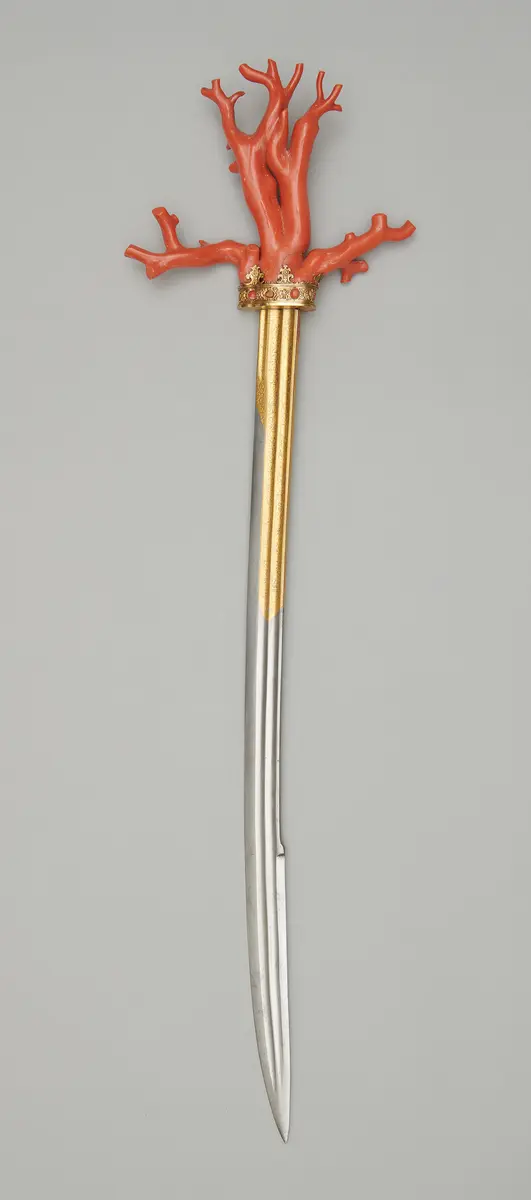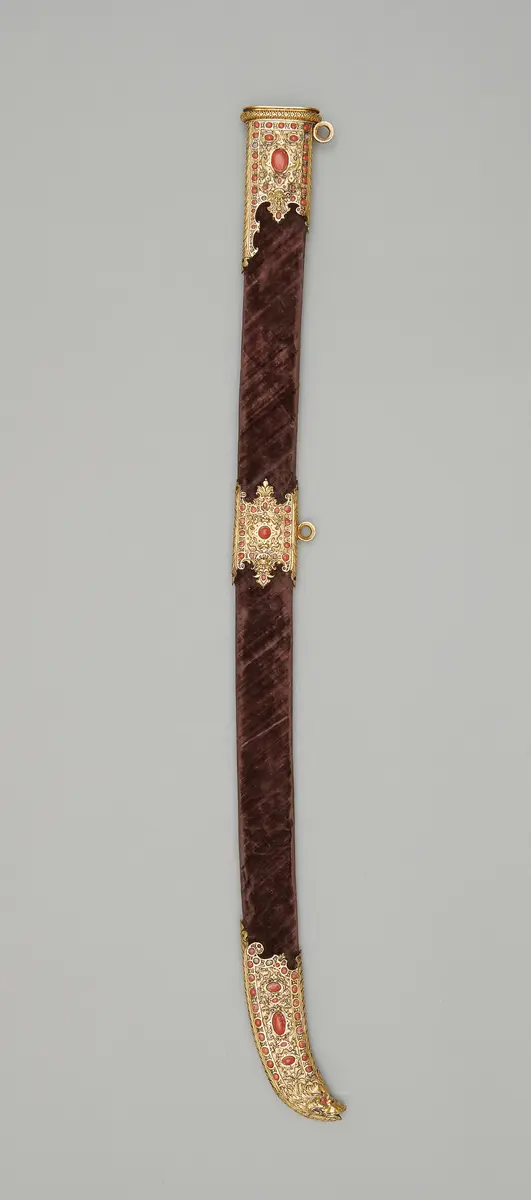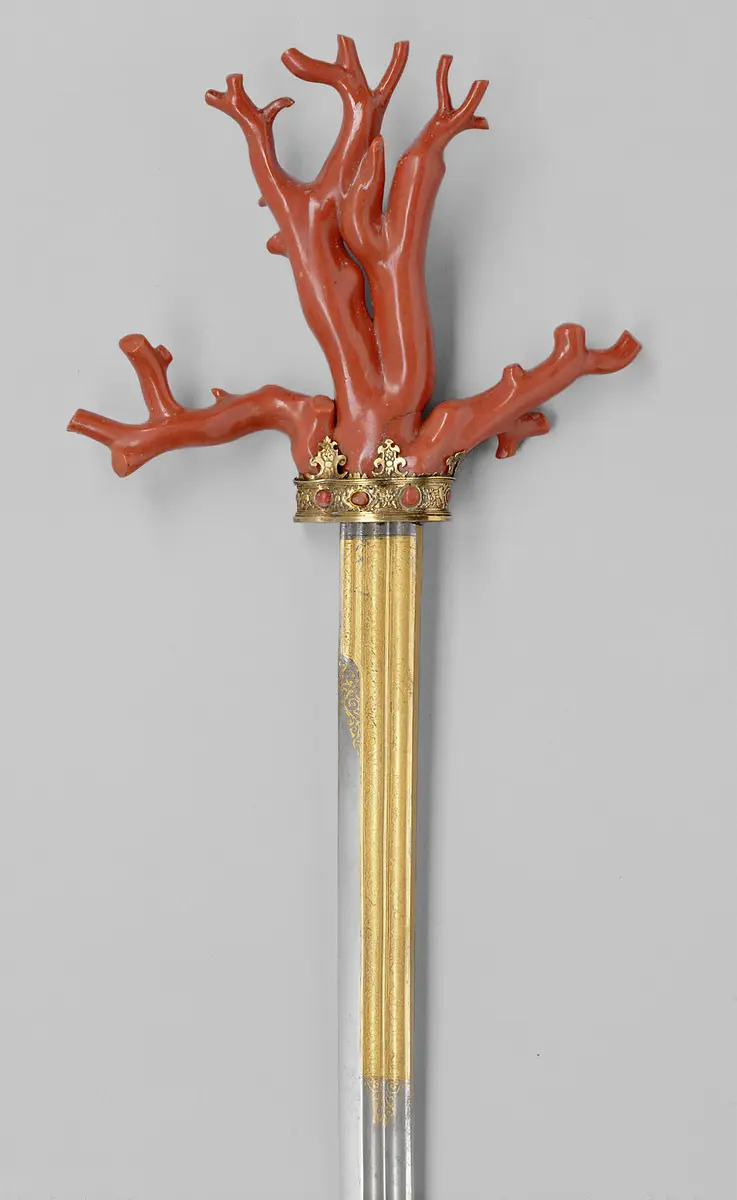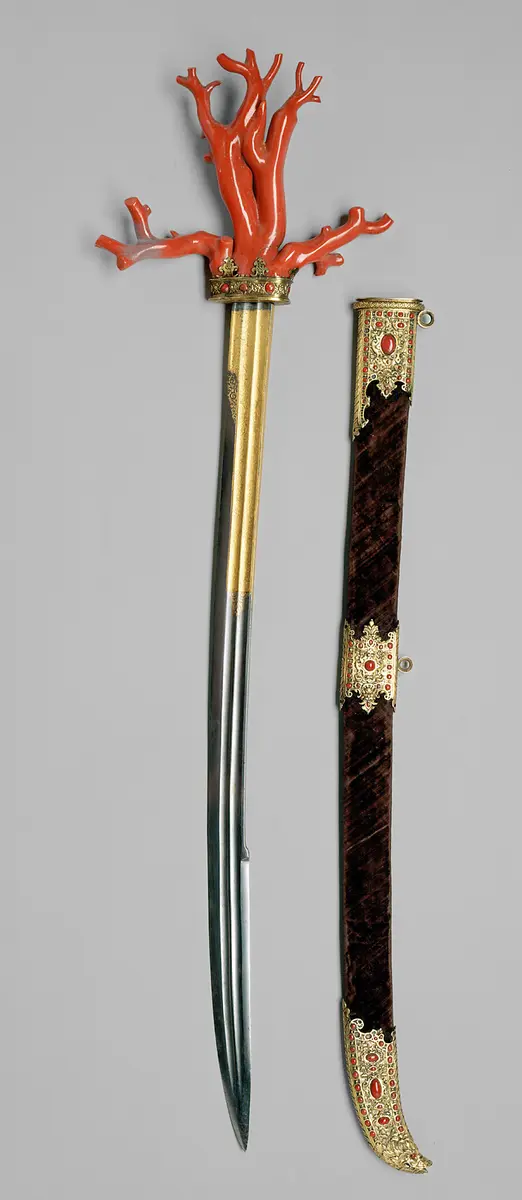Time:
um 1560
Object Name:
Korallensäbel, Kordelatsch, Coltelaggio, Malchus, Malchus (mit Scheide)
Culture:
Deutsch
Material/technology:
Klinge: Eisen, geschmiedet, teils geätzt. Ätzdekor: teils feuervergoldet. Griff: Korallenast, gefasst. Fassung: Silberblech, teils ziseliert, teils graviert,
feuervergoldet. Korallencabochons. Scheide: Holz. Textil (Seidensamt). Silber, teils gegossen, teils ziseliert, teils graviert, feuervergoldet.
Korallencabochons.
Dimensions:
Säbel: L 83 cm x B 22,7 cm x T 5,5 cm
Gewicht Säbel: 1,00 kg
Scheide: L 66,6 cm x B 6,3 cm x T 2,6 cm
Gewicht Scheide: 0,25 kg
Stamp / markings:
Klinge: einseitig zweimal drei Klingenschmiedzeichen (Stern und gekröntes A)
Copyright:
Kunsthistorisches Museum Wien, Hofjagd- und Rüstkammer
Invs.:
Hofjagd- und Rüstkammer, A 791



